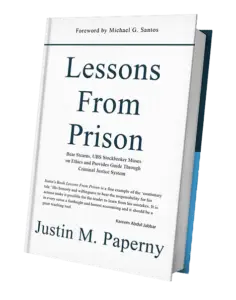At a federal prison camp, no one will stop you from complaining. You can mock the programs, dismiss the people working to improve, and treat your sentence like an inconvenience while others around you serve three times as long. But the result is clear: you risk losing access to sentence reductions, early release programs, and staff support, while earning a reputation as someone who cannot be trusted or taken seriously.
The Bureau of Prisons’ June 2025 memo makes clear that documented release plans are central to decisions on home confinement referrals. That plan isn’t a checklist or vague intention—it’s a documented record showing measurable progress. If you act poorly or make promises you don’t keep, it wipes out your credibility and shuts down opportunities—no matter how much money you have or what you did before prison.
The New BOP Directive: Proof Over Promises
On a recent webinar, we discussed the BOP’s directive to prioritize home confinement over halfway house placement for eligible individuals who have built a plan. That plan must be supported by documentation. Programs like RDAP (the Residential Drug Abuse Program) offer up to 12 months off a sentence, but completion isn’t automatic. As Scotty from our team explained, in his RDAP class at Leavenworth, only 20 out of 33 people finished. At Texarkana, as Glen Hudson shared, only 16 of 33 graduated.
The difference? Consistent work and documented effort. Staff don’t reduce sentences because they like someone. For white-collar defendants, staff often assume you’ll say whatever it takes to get a benefit but won’t follow through. The only way to push back against that view is to consistently show, in writing and action, what you’ve completed and how you’re working toward release—over weeks and months, not just at the end.
Conduct Matters—Because It’s Recorded
The story from Lewisburg is blunt: a white-collar defendant enrolled in RDAP called a friend to mock the program, laughing that he just had to “go through the motions” to get a year off. A fellow inmate reported him. Staff reviewed the recorded call. The result: removal from the program and loss of the sentence reduction.
In federal prison, arrogance doesn’t just cost respect—it costs time. And it destroys any chance of building a release plan that probation officers, case managers, and BOP administrators will take seriously.
Michael Santos Set the Documentation Standard
Michael Santos spent 26 years in prison and documented every step of his preparation—courses completed, work performed, personal goals met. That model became the Release Plan Workbook, which he authored and donated to thousands in federal prison. Santos didn’t rely on personality. He built assets: written, dated, provable records of progress.
The BOP memo reflects that same standard today.
Publish Your Plan Where It Counts
PrisonProfessorsTalent.com offers a platform for incarcerated individuals to publish their release plans, document personal growth, and create a verifiable digital footprint. This matters—not for show, but for administrators who need evidence when making early release or placement decisions. Michael Santos’s public profile on the site shows exactly how transparent, detailed documentation looks.
If you are in federal prison, you have two choices. You can spend your time complaining, or you can start building a documented release plan that shows measurable progress and supports early placement.
Join our weekly webinar every Tuesday at 11 a.m. PST / 2 p.m. EST, or schedule a personal call to get clear, practical help on writing and publishing a release plan that shows your progress and gives staff real reasons to support early placement.
Justin Paperny



